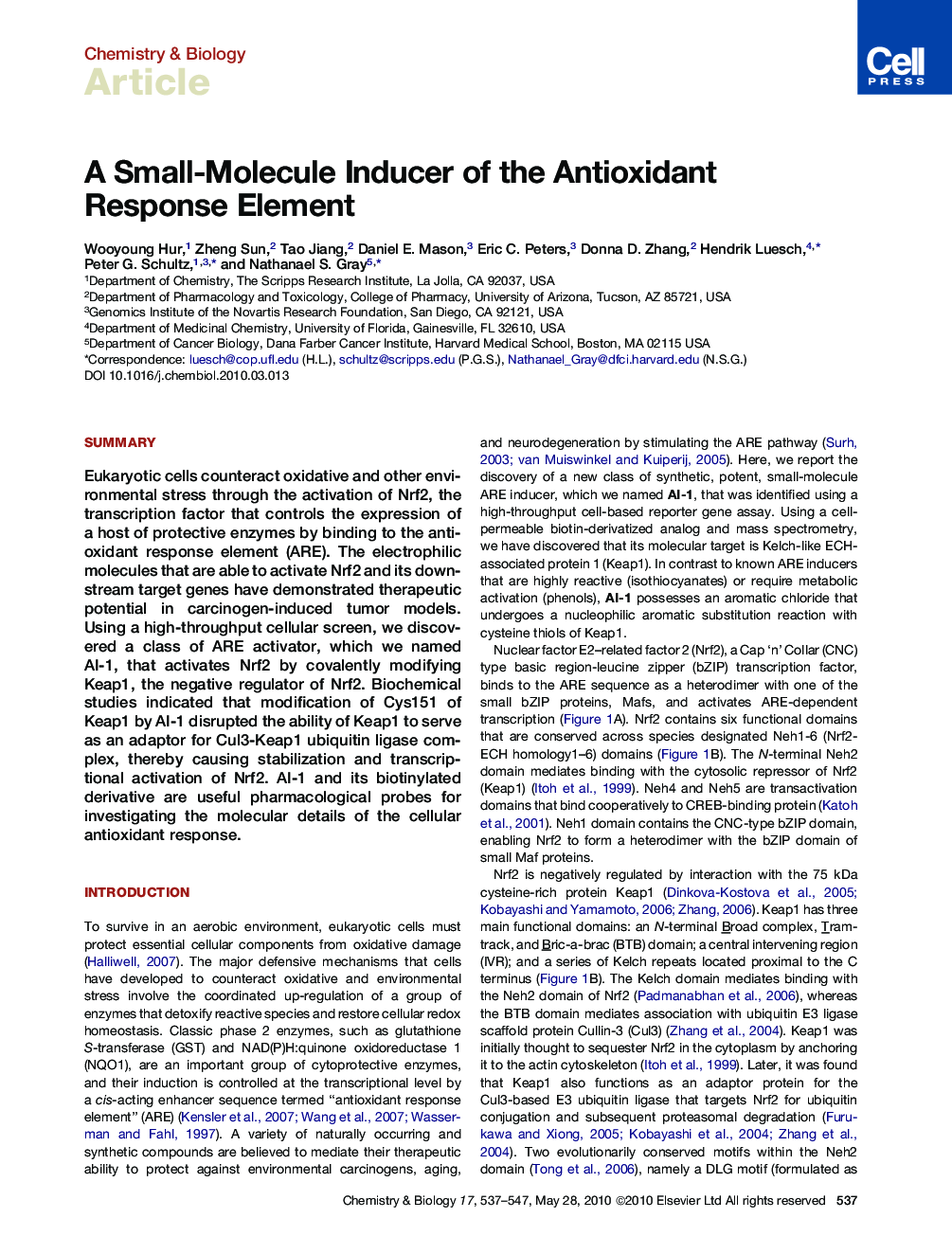| Article ID | Journal | Published Year | Pages | File Type |
|---|---|---|---|---|
| 1391593 | Chemistry & Biology | 2010 | 11 Pages |
SummaryEukaryotic cells counteract oxidative and other environmental stress through the activation of Nrf2, the transcription factor that controls the expression of a host of protective enzymes by binding to the antioxidant response element (ARE). The electrophilic molecules that are able to activate Nrf2 and its downstream target genes have demonstrated therapeutic potential in carcinogen-induced tumor models. Using a high-throughput cellular screen, we discovered a class of ARE activator, which we named AI-1, that activates Nrf2 by covalently modifying Keap1, the negative regulator of Nrf2. Biochemical studies indicated that modification of Cys151 of Keap1 by AI-1 disrupted the ability of Keap1 to serve as an adaptor for Cul3-Keap1 ubiquitin ligase complex, thereby causing stabilization and transcriptional activation of Nrf2. AI-1 and its biotinylated derivative are useful pharmacological probes for investigating the molecular details of the cellular antioxidant response.
Graphical AbstractFigure optionsDownload full-size imageDownload high-quality image (231 K)Download as PowerPoint slideHighlights► Keap1-Nrf2 pathway is involved in cellular protection against oxidative stress ► Electrophilic small molecules that stimulate this pathway possess therapeutic benefit under stress-related conditions and diseases ► A new class of Nrf2 activating electrophile (AI-1) was identified from small-molecule screening ► AI-1 undergoes a nucleophilic aromatic substitution reaction with multiple cysteine residues of the cellular redox sensor Keap1 ► Modification of Keap1 Cys151 by AI-1 disrupts the ability of Keap1 to serve as an adaptor for Cul3-ubiquitin E3 ligase complex, thereby leading to Nrf2 activation
